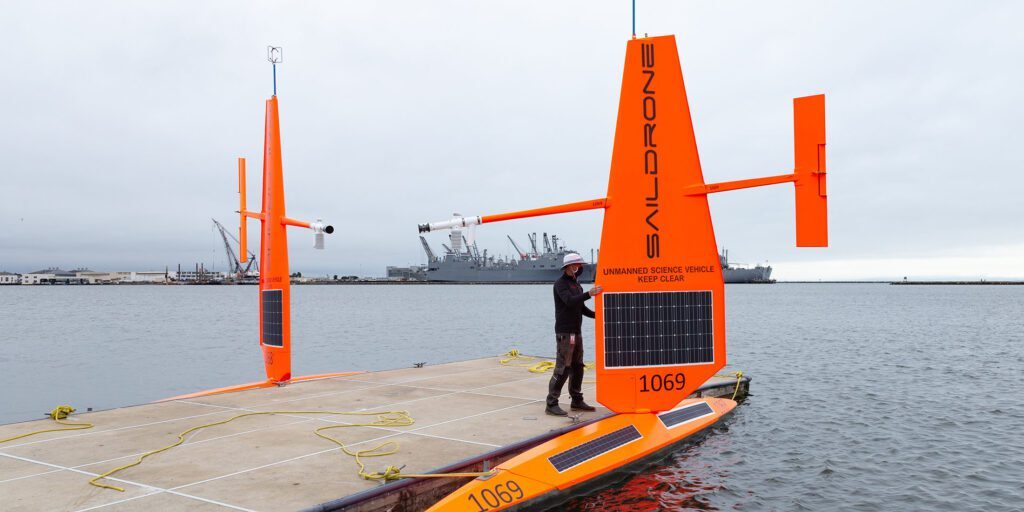Sea floor mapping continues to utilize unmanned technologies. The data updates and charts areas of the Bering Sea and other oceans where there is little to no information, potentially making nautical travel safer and more efficient in Western Alaska.
NOAA’s Office of Coast Survey maps nautical charts to help with safe shipping, national defense, and maritime boundaries. The coast survey office has contracted with TerraSond, a geospatial services company that specializes in sea floor mapping, since 1998 to chart Alaskan waters. However, ocean floor mapping dates back to 1807 when President Thomas Jefferson created the U.S. Coast Survey Office. Andrew Orthman, a charting program manager at TerraSond references lead lines, one of the very first nautical survey technologies.
“Of course you got lead lines, lowering a weight on a rope and physically measuring how deep it is; what’s funny is we still do this, but not for charting anymore. We do it as a great quality control tool. We love to take a lead line and lower it next to our fancy multi-beam sounders and make sure we are getting the same thing.”
– Andrew Orthman, TerraSond
In recent history there has been a shift to drone technology. During a recent Strait Science presentation, hosted by UAF Northwest Campus in Nome Orthman noted many benefits from these innovations.
“They’re entirely wind driven sailboats, no engine or props, they are entirely at the mercy of the wind and current. As a result, they’re slow, normally only 2 to 3 knots, but they are incessive. They go for 24/7 weeks or months at a time. It’s amazing what you can accomplish at 2 or 3 knots if you never stop. Solar panels to power their electronics; of course 0 emissions.”
Orthman also recognizes how the unmanned vessels keep people safe. When one begins to chart the uncharted, there are many risks that go into navigating seas, however, no one is put in harm’s way when autonomous boats begin to collect the data in the risky areas. Recently, Orthman says drones returned from a five-month mission to map the 20 meter and 50-meter isobaths, or depth line, off Alaska’s North Slope. The drones also had some additional surveying in the Norton Sound and Kuskokwim Bay.

In late May 2020 TerraSond, working to chart more arctic waters, had planned on using the drones for this project. The initial plan was to have the drones shipped up to Dutch Harbor, but COVID-19 travel restrictions made things difficult. The plan had to be changed.
“Saildrone released these things on May 28th from San Francisco Bay, they towed them out of the Bay, and waved goodbye. Off they went. They took a little over two months to arrive off of Point Hope. They began to trickle in there in early August after about a 3,000 nautical mile transit. It was very successful, no major issues on the transit up.”
– Andrew Orthman, TerraSond
The journey back is still underway, three of the four boats made in back to Almeda, California, where Saildrone headquarters are located. The fourth drone was caught in a big storm in the North Pacific in late November. The boat’s sail was damaged but is still being tracked.
“And the last word is that that one is in Queen Charlotte Sound, in Canadian waters, north of Vancouver Island. So, we’re thinking we are going to get the data from that boat in the next couple weeks or so. Depending on who they can round up to pick that boat up.”
– Andrew Orthman, TerraSond
Looking ahead for the year to come, TerraSond is collaborating with NOAA to chart waters in Bristol Bay, but nothing has been confirmed yet.
Image at top: A Saildrone employee wearing a mask for COVID-19 inspects a USV at the dock in Alameda before deploying it the Arctic. Photo by Saildrone, used with permission.




